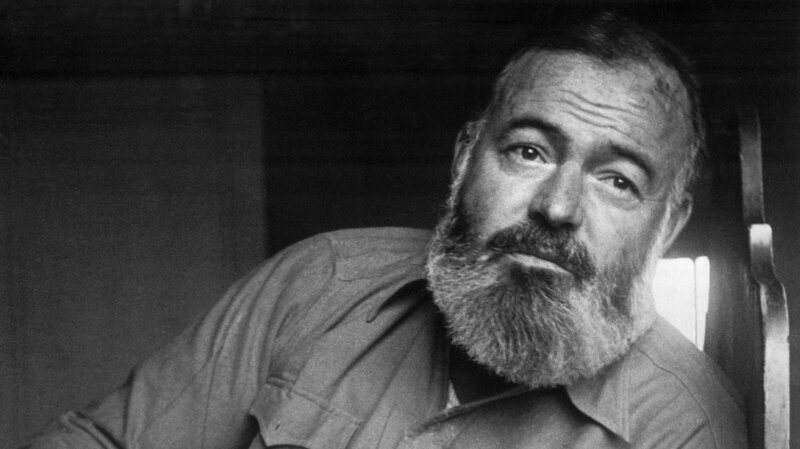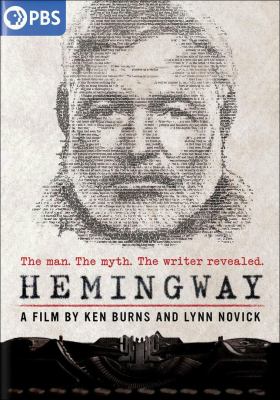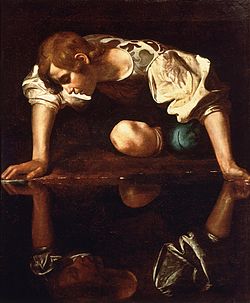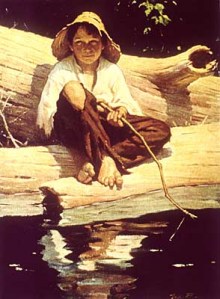West Palm Beach, FL. In the preface to A Moveable Feast, a book about his early life in Paris, Ernest Hemingway wrote that “if the reader prefers, this book may be regarded as fiction. But there is always the chance that such a book of fiction may throw some light on what has been written as fact.” The three-part Hemingway series on PBS, by Ken Burns and Lynn Novick, sets itself to the task of uncovering the real life behind the celebrated writer of fiction and the mythology he wove around himself.
As a young man, Hemingway loved hunting and fishing and good times. He had a challenging family, with a domineering mother and depressive father, neither of whom approved much of his way of life with its drinking and roughness. He went off to the Great War, serving in an ambulance corps, received terrible wounds, and fell in love with his nurse. After she broke his heart, he returned to newspaper work and began to weave the myth of himself as a war hero. He met and married his first wife, Hadley Richardson, and moved to Paris to become a real writer. In interwar Paris he joined the milieu of the artists who would shape the twentieth century and, through the guidance of Gertrude Stein and his own powerful self-discipline, he became a writer with a distinctive voice. Soon enough, he was a success, and he is still the man most often considered the greatest twentieth-century American author.
The image Hemingway cultivated was of himself was as a masculine hero. He labored over the typewriter, punching out short and direct sentences, never shying away from ugliness for the sake of convention. His love of hunting and fishing led him on ever-intensifying adventures, as he chased big game in Africa and big fish off the coasts of Key West and Cuba. He drank and caroused, he womanized, and he traveled to wars. He demeaned his peers and rivals and even disparaged his mentors. Hemingway believed Mark Twain was the beginning of all American literature, but he lived his life as though he was a character in an H. Rider Haggard story. Hemingway makes much of the ways that the persona he created left little room for the real person and little breathing space for his relations.
Behind the bluster and the bull-fighting was a very human figure. While Hemingway portrayed himself as a paragon of strength and described writers as being like bulls, the documentary looks closely at the burdens that bowed him down. His difficult relationship with his mother and the tragedy of his father’s suicide are familiar from other works on Hemingway’s life. He was scarred by the horrors of war, having seen three firsthand. Burns and Novick also look closely at his need to fulfill a masculine ideal. While Hemingway clearly loved many traditionally masculine pursuits, his need to dominate or appear dominant seemed to sometimes get away from him. At one point in Key West, he was boxing strangers and taking wagers, for little purpose. At times, his pursuit of adventure was self-destructive, and not only because of the airplane crashes. As Edna O’Brien says in the documentary, “ordinary life was anathema to him.” But his hard life made him die a much older man than he was by the calendar.
Hemingway’s most obvious burden was his alcoholism, which both fed and was fueled by his loneliness and depression. He wrestled with drinking, which interfered with his commitment to taking writing seriously and treating it like a job. Alcohol also complicated his relationships, contributed to him becoming abusive in his last marriage, and clouded his judgment on many things. Hemingway seemed to need always to be loved, but he had difficulty himself in loving well. He was always an unfaithful partner and often a faithless friend. He had four marriages, each of them unhappy in turn despite devoted wives, and he was not a very good father. He struggled with depression and eventually took his own life, just as his father had. He was riddled with insecurities and he was restless. In the documentary, Edna O’Brien suggests that his need for life to be an adventure was a result of his “deep-seated loneliness and depression.” Despite all of his cruelty and misdeeds, it is hard not to see Hemingway as something of a tragic figure by his later years, as he chases after young women, alienates his children, receives electroshock therapy at the Mayo Clinic, and dies as a man ravaged by alcoholism complicated by psychosis.
Yet he was a bold and powerful writer. He sought to portray life as fully and as humanly as he could, and this pursuit led him to his distinctive writing style. Hemingway suggested that a good beginning was to “write one true sentence. Write the truest sentence you know.” This is why his writing is still read today. His books are considered models of modernist prose. They are often assigned in high school and college, but they are also avidly read by other writers and people of all ages. As more and more names from his generation of writers are forgotten and left behind by the general public, figures such as Dos Passos or Sherwood Anderson, Hemingway remains. His persona and his writing remain iconic.
Rather than excusing or ignoring his flaws, the contributors to the Hemingway documentary suggest that it was his humanity and all of his flaws that made him so capable of portraying the human condition. The late John McCain, who appears in the film, explains this well. McCain, who was deeply influenced by For Whom the Bell Tolls, says of Hemingway that “we sometimes idolize people” and see them as having “every virtue and no vice. He had lots of vices. He was a human being.” Indeed, though Hemingway often spoke of wanting to be a good man, he rarely was. But For Whom the Bell Tolls shaped John McCain, who “always wanted to be Robert Jordan,” and inspired him to strive for an idealistic standard. Such is the power of Hemingway’s prose.
Where does such writing come from? What enabled Hemingway to forge his own literary path and fight for his place in the canon, despite all his problems? He had influences and he had a tremendous work ethic, but Hemingway also sought what Thoreau described as the “marrow of life.” Melville went to sea, Mark Twain went onto the Mississippi, Hemingway went to war. He served in the Great War, he observed the Spanish Civil War, and in his turn as World War II correspondent he occasionally took up arms. All his life he sought out new places and experiences, he loved Paris and Spain and Cuba and any body of water with fish in it. Could Hemingway have transformed the novel if he had never left Oak Park, Illinois? Does one need to live richly and a little dangerously to write in ways that remake conventions?
Does creativity derive from anguish? Despite his love of good times, Hemingway was often troubled, by himself and his relationships. In his Nobel acceptance speech, Hemingway said that “writing, at its best, is a lonely life. Organizations for writers palliate the writer’s loneliness but I doubt if they improve his writing. He grows in public stature as he sheds his loneliness and often his work deteriorates. For he does his work alone and if he is a good enough writer he must face eternity, or the lack of it, each day.”
Short or suffering lives seem to be the fate of many authors. In his book, Darkness Visible, William Styron reflects on his own debilitating depression and suggests that “despite depression’s eclectic reach, it has been demonstrated with fair convincingness that artistic types (especially poets) are particularly vulnerable to the disorder.” Styron describes his own trials, writing that “the pain of severe depression is quite unimaginable to those who have not suffered it, and it kills in many instances because its anguish can no longer be borne.” Styron theorizes about a connection between grief and creativity and the possibility that writers seek to “vanquish death through work honored by posterity.” If Hemingway had been truly happy, what would he have written?
One reason we watch documentaries is to learn about the past, but they are also remarkable sources on the present. In Hemingway we see this in the attention given to certain aspects of his life. The documentary makes much of Hemingway’s curiosity about gender and his experiences of and desires for gender ambiguity. As a young child his mother dressed him as a twin with a sister; sometimes they were treated as boys and sometimes as girls, and they had the same haircut. As an adult, Hemingway would sometimes mirror his hair with romantic partners. One of his sons, Gregory, sometimes dressed as a woman and in his later years went by the name “Gloria.” How central this should be to our understanding of Hemingway is itself ambiguous, but it demonstrates an aspect of his life previously omitted from conversation and of new interest because of our era.
A perhaps more striking aspect of Hemingway’s life which was previously unremarkable but which now holds newly-realized significance is his history of head injuries. Burns and Novick note his many serious concussions and head injuries. Our era’s better understanding of brain trauma may help us better understand Hemingway’s life. His later years of psychosis and erratic behavior now take on a new light. We may not definitively know the role of his physical traumas in his mental and relational life, but we can better see him for what he was, not just a man “beaten down” by life, but a man who had taken actual beatings with real consequences.
The new things we learn about Ernest Hemingway in this documentary not only make him more interesting; they make his writing more remarkable. Here is an author famed for clear and direct prose, who wrote as though bravery and masculinity were straightforward, if challenging, things. But he was a man whose life was endlessly complicated. His interior world was complex and, at times, chaotic. His exterior world was full of conflict. Yet he wrote beautiful, simple sentences and in the best of his works he was an author in full control of the language and all its power. His writing transcended his reality.
The ultimate beauty of a documentary or almost any retrospective appraisal of a life is the ability to look into the face of the old man with the white beard and search for the smile of young Ernest before the Great War. At the end of A Moveable Feast, Hemingway wrote:
There is never any ending to Paris and the memory of each person who has lived in it differs from that of any other. We always returned to it no matter who we were or how it was changed or with what difficulties, or ease, it could be reached. Paris was always worth it and you received return for whatever you brought to it. But this is how Paris was in the early days when we were very poor and very happy.
Much the same could be said of Hemingway. Had he been happier or more obscure, we may not know his name, but being what he was he left a feast of writing composed of many different courses. Thus the memory of his life and the meaning of his work differs for each reader. Hemingway himself could not resolve the tensions within his life, but from them he wrested brilliant prose. And we continue to return to his writing and, in some ways, that means there is never any ending to the story of Ernest Hemingway.













Thanks for the essay on Hemingway and discussing the complexity of his personality, and incredible drive to succeed. The documentary left out discussion of Hemingway’s poetry which was acerbic and yet poignant to the understanding of him as a whole person. His writing was indeed revolutionary in his time and his disenchantment with social and cultural convention, which limited the freedom of artistic expression of the era, found expression in a German publication named “Der Querschnitt” in 1926. The while being bored in a classroom long ago I found a Hemingway poem “The Age Demanded” by accident and it piqued my continued interest in Hemingway through the years because I could relate to his rebellion against his era, and mine against my era too. Needless to say, my professor didn’t share my enthusiasm for “his bad language” among other things Hemingway did and said. When I hear discussion about todays’ political correctness and cancelling literary and artistic expression past and present the following portion of a Hemingway poem comes to mind:
“The age demanded that we sing / and cut away our tongue” and “The age demanded that we dance / and jammed us into iron pants.”
And as I recall the rest of the poem said that in the end the age was handed the kind of (excreta) it demanded or something close. I too hope so…
Thank you for bringing up what we now understand about head injuries, and the probable effect of Hemingway’s injuries. It leads me to think more deeply about his significant woundedness — not only the concussions, but the emotional wounds he suffered that damaged any ability he would have had for making commitments to other human beings, such as his wives and children. It makes me think of my own wounds, which are not nearly as dramatic as what Hemingway suffered, but which have their effect.
Comments are closed.